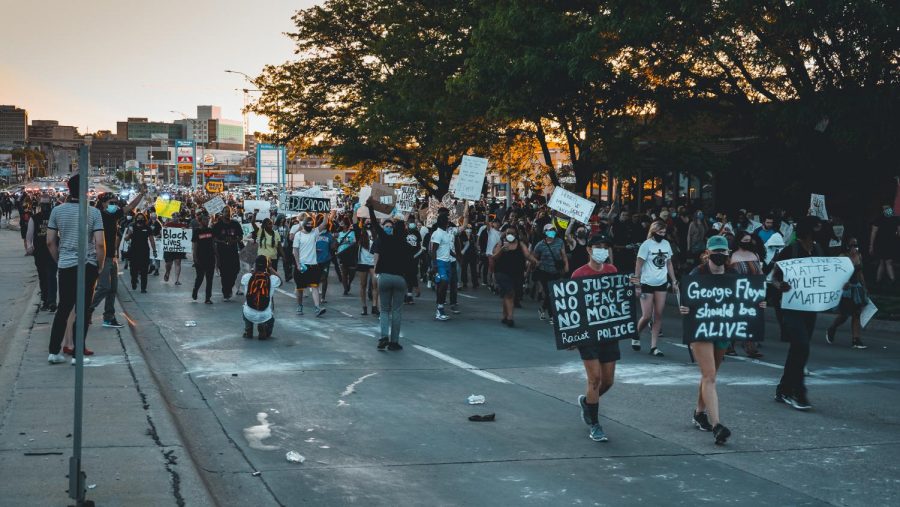From tweet to street
Millard students use social media to amplify voices
3.8 billion. It’s hard to imagine that half of the world’s population is affected by Instagram, Twitter, and Facebook. Nothing else touches that many people globally.
On May 25, George Floyd’s last breath was seen across a nation. With social media in the hands of many, the word was spread of another unjust death in the black community. Black Lives Matter or BLM was once again trending on all platforms. Senior Cartney McGuigan says the resurgence of the movement called action to all Americans to remove themselves from their personal “bubbles.”
“The movement has opened the eyes of many and made a problem that has been around since the beginning of time seem like it can be changed,” senior Cartney McGuigan said.
Social media has connected the world in ways that no other platform has been able. BLM has capitalized on utilizing a platform that connects multiple nations. Not only were there protests in North America but also in Europe, Asia, Africa, and South America. On June 2, Blackout Tuesday, people posted a black image on all social media platforms in support of BLM. It called for people to support the movement and black owned businesses.
“Social media plays a big part in getting voices heard by raising awareness, raising money, [and] just plain out telling people we [BLM] are here. A single post can educate many,” senior Sena Ahovissi said.
The importance of social media regarding the Black Lives Matter Movement is that it is now possible for the usually unheard voice to be shared. Black people are now able to share personal accounts of their struggle on a very public scale and call for change.
“Social media is positively affecting the BLM movement because it’s giving people of all races the confidence to share stories and support the cause,” senior Kya Carter said.
Another big role social media plays is getting young voices heard. Social media has allowed a space where teenagers can speak freely about their beliefs. When the BLM movement started to gain traction, teenagers took to social media to show their support.
“Social media allows young people to gain confidence in sticking up for what they believe in,” Carter said.
BLM has also asked people to educate themselves on black history. Social media has provided a platform where people can take the first steps to better educate themselves on the topic.“Social media has created a space for me to educate myself and other people on the things [BLM movement] happening in the country right now,” McGuigan said.
Though social media can be used as a tool McGuigan said that social media can be seen as a “double edged sword” and does not always have a positive influence.
“It [social media] shows people what really happens, but can also create a place of false narratives.” McGuigan said.
Millions of people post on social media, and it can be difficult to monitor all of the content. The lack of control allows for posts to not always be factual and for a spread of misinformation. Misinformation spreads quickly on social media because of confirmation bias and validation of preexisting beliefs.
An example is when people post something without context to lean towards their views. Pictures and videos that are cropped and cut can be made relevant when they are actually not. This past summer there were many pictures and videos of violence at protests spread on social media but some were later proven to be at different time periods. The pictures were used to create a narrative of untrust on both sides.
Even with social media’s missteps it has become essential to BLM. Because of social media, members of the Black community have realized how many are standing in unity with their cause. As Carter said, “This is everyone’s movement.”


